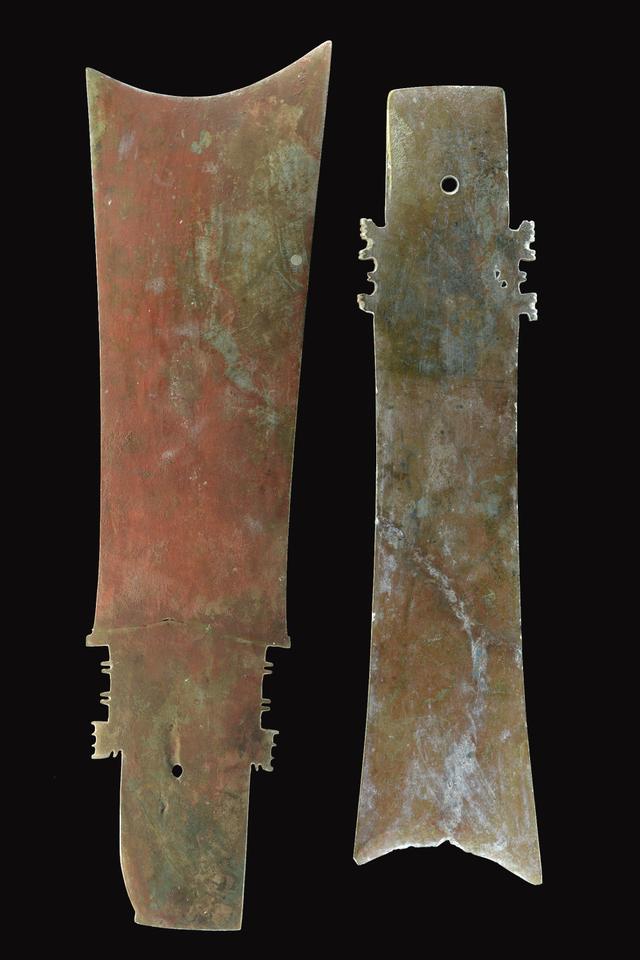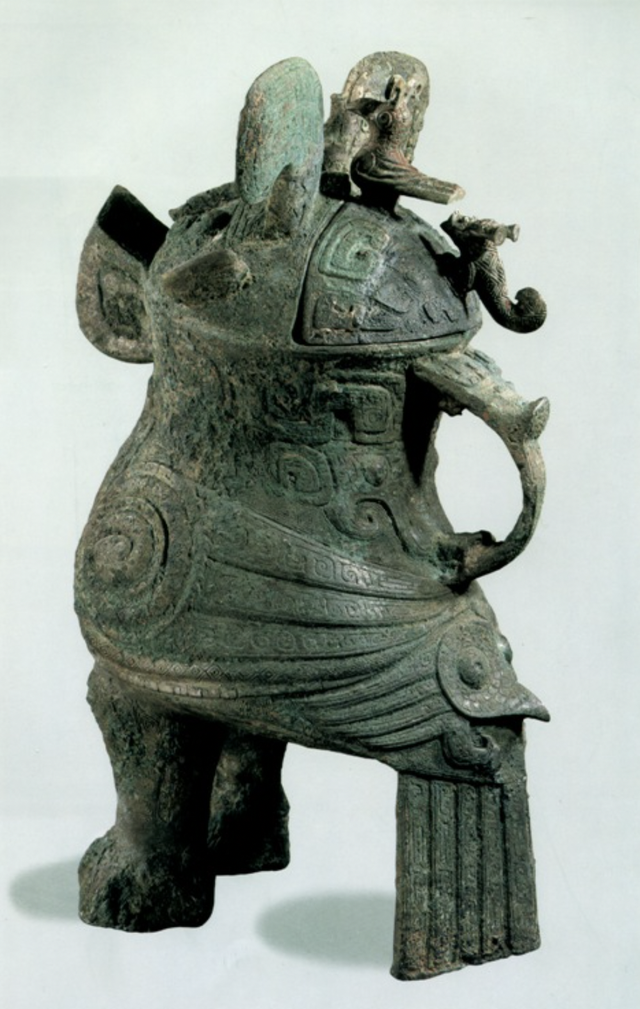Central Media Guanyu | Yellow River Culture in Cultural Relics
Author:Henan Daily Client Time:2022.09.05
From September 1st to 4th, the ninth "China Museum and related products and technical expo" ("Bo Expo") was held in Zhengzhou, Henan.
The theme of this "Bo Fair" is "Museum of the New Era: Innovation, Development, Inheritance", and 437 museums from all over the country have unveiled collectives, and they have "bright treasures". During the exhibition, a lot of Henan cultural relics, such as tooth carved silkworms, tooth, and good women, also attracted the widespread attention of the public. In the museum, touch the historical context, and perceive the long and splendid Yellow River culture.
Tooth carving silkworm: silkworm civilization starts from this
China is the earliest country in the world to domesticate silkworms and silk woven silk. As early as the Yellow Emperor's era, the story of "the ancestors started silkworm" was circulated; around the Warring States Period, the ancient Greeks had called China the "Silk Kingdom"; in the Han Dynasty, with the opening and prosperity of the Silk Road, silk became One of the signs of Chinese civilization is passed on to all parts of the world.
The exploration and research on the origin and development process of Chinese mulberry silkworms and silk is a key topic for the exploration of Chinese civilization.
This tooth carved silkworm was unearthed in the Zhengzhou Shuanghuashu site, which is about 5300 years ago, and carved with wild boar teeth, 6.4 cm long, less than 1 cm wide, and 0.1 cm thick. Its shape is extremely similar to modern silkworms. It is the earliest silk carving artwork discovered by China so far, which has important research value for exploring the "Chinese silk origin".

This is a tooth carving silkworm unearthed from the Shuanghuashu site of Zhengzhou (data) (data photo) (information photo) (photo)
"Among the many prehistoric sites in our country, rich archeological empirical materials related to silkworms and silk are found, but there are still key issues to be clarified: whether these silkworms are wild or domesticated?" Zhengzhou Cultural Relics and Archeology Institute Chang Gu Wanfa said, "The tooth sculptor silkworms make everything be self -explanatory."
A large number of crops discovered by Shuanghuai Tree sites and the tooth sculpture silkworms that are being spit -up, together with the agriculture and silk physical objects found in the nearby Qingtai and Wanggou sites, etc., which fully proves that around 5,300 years ago, the Central Plains has begun to domesticate silkworms. Form a more complete pattern of farm and mulberry.
Li Boqian, a professor at Peking University and chief scientist at Xia, Shang and Zhou Dai, bluntly stated that the settlement group headed by the Yellow River Basin headed by Shuanghuai Tree site is the earliest representative of the era in the history of Chinese farmers and mulberry civilization.
Tooth: Draw the widespread king of the Xia Dynasty
In the Archaeological Museum of the Zhengzhou Cultural Relics and Archeology Research Institute, a special exhibition of "Chinese tooth Culture" with different periods and regions of different periods and regions showing related academic research results is underway.
In the late Xia Dynasty, the two miles of Henan, Henan, found 4 jade teeth. Compared with the well -known cultural relics such as green pine dragon shape and cream nails, the "looks" of the tooth seem to be too "flat": it is usually flat and thin strips, the handle has a hole, the front end has a concave blade, and y The shaped blade or diagonal blade is raised at the edge of the sides of the body and the handle.
But in detail, it contains the influential password of the Xia Dynasty. About 3700 years ago, its wide -regional king's political system was affected within thousands of kilometers in East Asia, and the seeds of civilizations were far away.

This is a Dentan (data photo) unearthed from the Erlitou site of Yanshi in Henan (Photo) (Photo Photo) (Photo of the Erlitou Working Team of the Institute of Archeology of the Chinese Academy of Social Sciences)
"According to the existing archaeological empirical materials, the emergence of tooth can be traced back to more than 4,000 years ago." Zhao Haitao, the captain of the Erlitou Working Team of the Institute of Archeology of the Chinese Academy of Social Sciences, said that the early Denta size was smaller and the shape was relatively simple. In the cultural period of Erlitou, the size of the tooth body, the dragon of the teeth, and the transformation of the functional ritualization of the use of the teeth, became an important ritual device representing the level of identity. More importantly, from the Central Plains region to the south, in Hubei, Hunan, Sichuan, Guangdong, Fujian, Hong Kong, and even northern Vietnam, the two -mile -style teeth have frequently appeared, showing a large -scale, cross -regional communication posture Essence
Some scholars pointed out that the route of spreading and spreading to the surrounding vast areas can clearly indicate that at the time of the development of Chinese civilization, the pattern of dynasty identity, cultural identity, and ceremonial identity began to appear.
Woman is good: Looking back at the pinnacle of the Bronze Age
On the cultural and creative booths of the ninth "Bo Expo" Henan exhibition area, archeological blind boxes, treasure chocolate, refrigerator stickers, weather bottle and other series of cultural and creative products created around the women's good IP I can't help but "buy" as a respect.
The woman who comes from the Tomb of Yinxu, Anyang, Henan Province, has a history of more than 3,000 years. It is the earliest bird -shaped copper wine in China that has so far.
It is standing upright with a standing head, with a crown on the top of the head, a round eye glaring, both wings, and the thick two feet and the width of the droop form three fulcrum. Dragon patterns, plate snake patterns and other decorations are extremely gorgeous.

This is a good maternity (information photo) of the "Treasure of the Nine Town Academy" in Henan Museum. (Photo Conferring in Henan Museum)
In the late Shang Dynasty where women were in the business, the bronze manufacturing industry was highly mature, which was the heyday of the bronze era in China.
"During this period, the bronze wares are not only large, but also extremely rich in organic categories, such as rituals represented by Ding, 簋, 觚, and Jue, instruments represented by 铙, bells, weapons represented by 钺, Ge, etc., cover all aspects, cover all aspects, cover all aspects. . "According to He Yuling, a researcher at the Institute of Archeology of the Chinese Academy of Social Sciences and deputy station of Anyang Workstation, there are 468 bronze wares unearthed in the tomb of only women. On the other hand, the late Shang Dynasty bronze also reached its peak in terms of artistic performance and aesthetic value. Usually, a large number of complex decorative points are used to show the exaggerated mysterious, full of anger, and not losing the solemn and solemn aesthetic orientation.
The most important thing is that the bronze wares at this time have become a reflection of social ideology and national political system. In the name of "ceremony", the authority, will, and strength of the ruler show the authority. He Yuling said: "This ritual culture is one of the outstanding features of Chinese civilization."
The exquisite bronze wares silently show the brilliant glory. Although the bronze era has gone away, the remaining rhyme left is still in the cloud of history.
General Planning: Zhao Danping
Produced: Min Jie
Coordinating: Wei Tiemin
Reporter: Gui Juan, Yuan Yueming
Video: Ren Zhuoru
Edit: Min Jie
Xinhua News Agency jointly produced by the external Xinhua News Agency Henan Branch
Produced by Chinese Story Workshop
- END -
"Poetry Appreciation" heard the cicada again, listening to the cicada in ancient poems, and experienced the movement of nature

The weather gradually became hot on the tree! I know, also known as cicada. In anc...
Cloud Walk+Cultural Bo Shanxi Seminar to take you to explore the site of the ancient city of Jinyang in Taiyuan
Shanxi Evening News (Reporter Sun Yiqiong) On June 17th, the Taiyuan Cloud Walk and Wenbo Shanxi Lecture, jointly launched by Shanxi Evening News · Wenbo Shanxi and Taiyuan Cultural Relics Bureau!